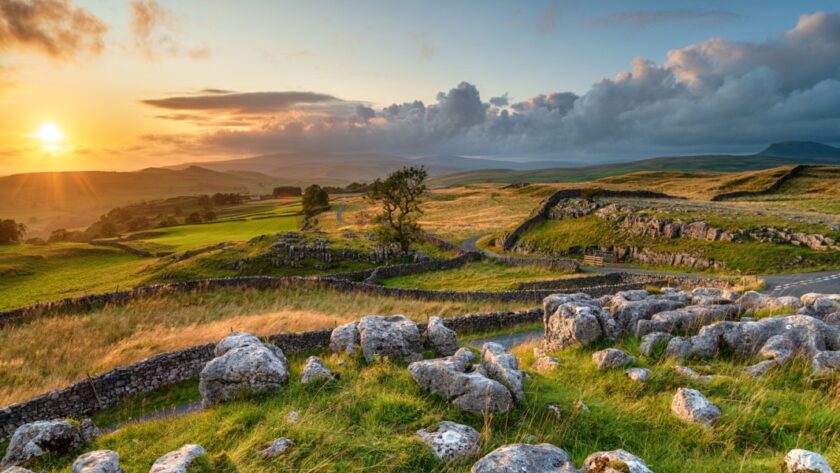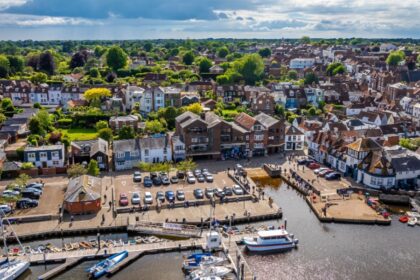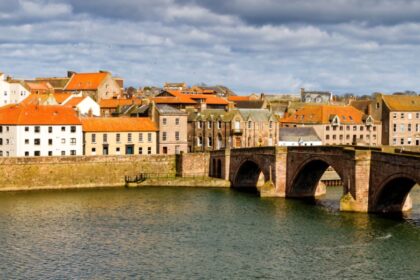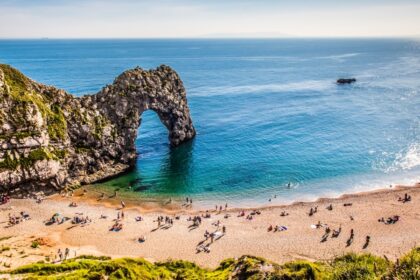Yorkshire sits contentedly in the middle of England like a great big chunk of countryside that refuses to be hurried. It is the largest county in England, and often behaves like a small country of its own. People here will happily tell you, sometimes without being asked, that Yorkshire is God’s Own County, and you may find yourself quietly agreeing.
It is a place of moors, dales, hills and old stone walls. It has cities full of grand buildings, coastlines that once bustled with smugglers, and villages where time seems to have stopped around the era of proper teashops. And through it all, there is a sense that Yorkshire knows perfectly well how lucky it is to be Yorkshire.
Where history left its fingerprints everywhere
Yorkshire does not do things by halves. York itself, once the Roman city of Eboracum, still wears its medieval city walls like a well-tailored coat. The Minster rises above the rooftops like something from a cathedral design competition where everyone was determined to show off. Vikings arrived here too, making York one of their major settlements before politely handing it back.
Then there are the castles and abbeys. The ruins of Fountains Abbey and Rievaulx still cling to their valleys with a kind of noble decay, while Castle Howard sits like something out of a costume drama, which is exactly what it has been on more than one occasion.
Yorkshire moors, dales and places that make you stop and stare
The Yorkshire Dales roll out like a patchwork quilt of green fields, stone barns and winding dry-stone walls that seem to have been laid down by someone with endless patience. Villages like Grassington and Malham offer views that seem custom-built for postcards.
The North York Moors, by contrast, sweep across the landscape like a windswept film set, with purple heather in summer and enough bracing air to clear your head whether you want it cleared or not. Steam trains still puff their way across parts of it as if they missed the news about modern transport.
Seaside tales and smugglers’ haunts
Over on the coast, Yorkshire continues to show off. Whitby clings to its cliffs beneath the ruins of an ancient abbey that helped inspire Dracula. Scarborough offers the classic English seaside experience, complete with donkeys, arcades and the possibility of rain just as your ice cream arrives.
Further south, Bridlington and Filey offer quieter charm, while Robin Hood’s Bay feels like the kind of village smugglers would design if given an architect and a supply of winding alleyways.
Puddings, tea and a certain confidence
Yorkshire takes its food seriously. Yorkshire puddings, of course, which traditionally were the size of small rowing boats. Then there is Yorkshire tea, served properly strong. You will also encounter Parkin, Wensleydale cheese, and in certain establishments, portions that could feed a rugby team.
But perhaps most notable is the way Yorkshire carries itself. There is a quiet confidence here, a sense that things are done properly. People will tell you where to get the best fish and chips or how to make a proper brew, and they are usually right.
Where the old ways linger
For all the grand cities and visitor attractions, much of Yorkshire’s charm lies in its quieter corners. Stand on a lonely moor as the wind whistles across the heather, or walk a riverside path in the dales as the sheep politely ignore you, and you start to feel why people here are so fond of their county. Yorkshire does not try too hard to impress. It simply is.





